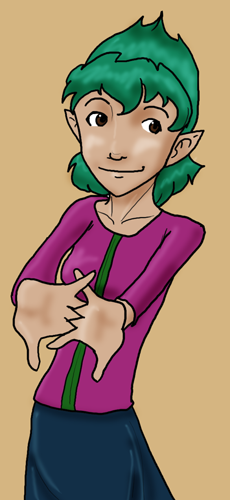





|
Hide spoilers
Show spoilers

Elcenian Languages
Elcenia features the following popular languages (list is not exhaustive):
-
Alteisec is spoken in Drast and Orzon. It has two prominent dialects, Upland and Lowland, both of which are spoken in each country.
-
Draconic is spoken by dragons only. It encompasses sign language versions suitable for a variety of body plans. Draconic is a constantly shifting language with myriad synonyms available for virtually any concept, new ones cycling in as old ones become obsolete. Non-dragons can learn individual words, but conversance in Draconic (as opposed to memorizing a few static sentences) requires being a dragon, or a deity.
-
Ecian is spoken in Pleia and Nirlan, although the dialects in the two countries are barely mutually intelligible.
-
Egerian is spoken in Egeria. It is distantly related to Kida.
-
Ertydon is spoken in Ertydo, Linnip, and Gibryel. The Linnipese dialect includes many loanwords from old Linnipese languages.
-
Fey languages include a variety of tongues spoken by fairies and pixies. There are over a hundred such languages in a dozen language families.
-
Gingha is spoken in Tava. It is notable for having very strongly class-marked (mutually intelligible) dialects, but little regional variation within a class.
-
Kandaph is spoken in Mekand. It has many loanwords from Ecian, and various north Anaistan languages.
-
Kettec is spoken in Kervaite. It is related to Munine, but not mutually intelligible, and uses a different alphabet.
-
Kida is spoken in Aveha, Baveria, Embreyae, Ekanedae, and Erubia. Through much of history it was considered the ideal poetic language, and native speakers of other languages sometimes learned Kida to write poems in it.
-
Leraal is spoken in Esmaar, Saraan, Ryganaav, Iraam, Imilaat, Oridaan, and Petar. The Ryganaavlan dialect is dramatically different from standard Leraal (adding G and Y sounds and relaxing the rules about syllable construction), but is mutually intelligible with standard Leraal for most simple purposes after the sound transformations are understood. Petaran Leraal is also different from standard, with loanwords from tropical langauges and altered vowel sounds, but it is also comprehensible to speakers of the other dialects. Other Leraal-speaking countries have accents relative to each other but are not materially different in dialect.
-
Merfolk languages include a wide variety of languages spoken by merfolk in the nations they occupy. There are over 150, from a score of language families.
-
Mrynish languages are a diverse group of languages spoken in Mryne. These come from three main language families and several smaller ones. Most of these languages have Ecian loanwords.
-
Munine is spoken in Reverni, Rannde, and Aqathe, with the version spoken in Aqathe actually being a pidgin between Munine and an adapted-for-air version of a local merfolk tongue. Most Munine speakers can understand an Aqathen speaker.
-
Old Linnipese languages include some half-dozen related, functionally dead languages once spoken in what is now Linnip. These are still studied, mostly for ecclesiastical or historical reasons.
-
Salha is spoken in Larotia, Ebrene, and Mistal. Originally a creole of Kida and Alteisec, it is now a distinct language from either, and they are not mutually intelligible.
-
Sengo is spoken in Koyapar, Criin, and Moyet, although accents vary widely and not all forms are mutually intelligible in speech. (Writing is consistent.)
-
Skyfolk languages include a variety of languages spoken by skyfolk. It is typically difficult for non-skyfolk to pronounce some of the sounds in these languages, but they can learn to understand them, and to make standard approximations of the phonemes.
-
Sprite languages include a variety of dance-based languages used by sprites. These languages must be performed on the ground. They can be used by creatures without wings or four arms, albeit not to full effect.
-
Tash is spoken in Imminthal. It is related to some unintegrated leonine languages.
-
Unintegrated leonine languages include a variety of related languages spoken by the leonines that live separately from other species, primarily in Ryganaav.
-
Vampire is the common language of all vampires. Different regional communities of vampires have strong accents relative to each other in the vernacular, but there is also a (significantly different) temple dialect which is consistent worldwide and ecclesiastically monitored.
-
Vansalese is spoken in Corenta and Rozarima. It is known for having many thousands of complex characters necessary to become literate in the language, although it is easy to learn to speak aloud.
-
Verian is spoken in Pra Verian. It is related to Ertydon but they are not mutually intelligible.
-
Wolfrider is spoken by wolfriders (the riders, not the wolves). It consists of a small vocabulary monosyllabic words spoken in arbitrary sequences, with nuances of meaning and grammatical structure added by the use of backchannel. Magical assistance is necessary to let anyone else, even a dragon, speak fluent wolfrider (although extremely simple meanings can be conveyed through speech alone). Standard translation spells do not help with the backchannel, but specialized ones exist. Wolves have a simple system of communicative howls which are used over long distances; this is more of a code than a language.
|











